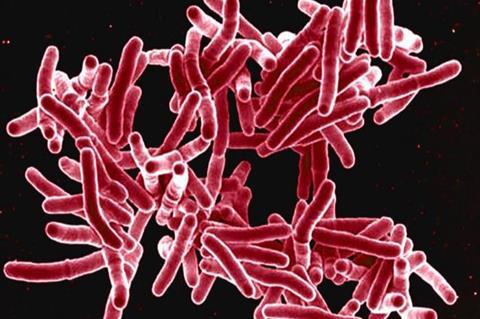A group of Chinese scientists has uncovered a previously undefined pathway by which Mycobacterium tuberculosis (Mtb), the causative agent of tuberculosis (TB), counteracts host immunity.
The researchers identified the known Mtb protein tyrosine phosphatase PtpB as a phospholipid phosphatase that inhibits the host inflammasome-pyroptosis pathway by hijacking host ubiquitin.

The study, carried out by Prof. Liu Cuihua’s group at the Institute of Microbiology of the Chinese Academy of Sciences (IMCAS), in collaboration with Prof. Qiu Xiaobo from Beijing Normal University, was published in Science.
Mtb is an intracellular pathogen that has developed numerous intracellular survival strategies, and the intricate and dynamic interactions between Mtb and its host determine the occurrence, progression, and outcomes of TB.
One interesting feature evolved by Mtb is a set of eukaryotic-like effectors, but their host targets and regulatory roles in pathogen-host interactions have been largely unexplored.
In this study, LIU’s group examined the whole genome of Mtb to predict secreted eukaryotic-like proteins possessing eukaryotic-like motifs or domains that might target host factors directly. These Mtb effector proteins were then subjected to further experimental analyses using an inflammasome reconstitution system for screening inhibitors of inflammasome-pyroptosis pathways.
Out of 201 predicted Mtb-secreted eukaryotic proteins, the scientists identified PtpB as a key bacterial effector that was abundantly secreted by Mtb to inhibit both NOD-like receptor protein 3 (NLRP3) and absent in melanoma 2 (AIM2) inflammasome pathways.
Subsequent experiments demonstrated that PtpB inhibited GSDMD-dependent cytokine release and pyroptosis to promote Mtb intracellular survival in macrophages. Mechanistically, Mtb-secreted PtpB targets and dephosphorylates host plasma membrane phosphatidylinositol-4-monophosphate (PI4P) and phosphatidylinositol-(4,5)-bisphosphate [PI(4,5)P2] to inhibit membrane localization of the N-terminal cleavage fragment of GSDMD (GSDMD-N), thus preventing GSDMD-mediated immune responses.
This phosphatase activity requires PtpB binding to ubiquitin via its unique ubiquitin-interacting motif (UIM)-like region. Disruption of phospholipid phosphatase activity or the UIM-like region of PtpB enhanced host GSDMD-dependent immune responses, thus reducing intracellular pathogen survival.
This study reveals a previously unrecognized strategy by which pathogens inhibit pyroptosis and counteract host immunity by altering host membrane composition. Its results might lead to the development of a potential TB treatment by targeting the PtpB-Ub-phospholipid-pyroptosis axis.







No comments yet